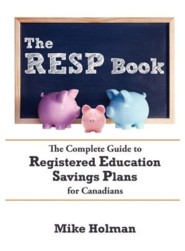Recently I made a comment which arose from a discussion about stock dividend yield (which I prefer) and historical dividend growth.
My comment was that given a pool of stocks that have consistently paid an increasing dividend (this last phrase is important, so please re-read it before arguing with me), dividend yield is at the CORE of my purchasing decision. Obviously a high dividend yield because the company is in trouble and hence the price is low isn’t good (like GM), or over focusing on a single sector because it has high yield (like me and Canadian banks) isn’t good either.
Dividend Yield or dividend growth?
Before I go further I’ll define a few terms. By certain I mean very likely (as in, the sun will certainly rise tomorrow – there’s a small chance it won’t, but it’s very, very likely or Walmart will certainly still be in business next year). Let’s say certain is a 99.9% chance of something happening. “Less certain” is a 1-99% chance (or at least significantly lets then certain) that something is true and unlikely is a 0.01% chance of something happening (e.g. you might win on that lottery ticket you just bought, but it’s unlikely).
With stocks there are all sorts of numbers you can use to evaluate them (such as price, earnings, income, dividend, assets, etc, etc). Some of these numbers are reported directly, while others are derived from other numbers (for example, the dividend yield is derived from the dividend and the stock price).
Each of these numbers are certain or less certain. Price is certain (you can put an order in and buy at that price), similarly any numbers derived JUST from Price are certain (such as open price, closing price, high price, low price, average, etc, etc). Dividend is certain, it’s actually cash that was sent to investors (and they all can verify that they got paid). Dividend yield (a certain divided by a certain) is a certain value.
Earnings is a less certain value. Enron and their ilk get creative with their accounting in order to put the best food forward with investors. Since this is the game they’re playing, I’m more skeptical of the reported earning and anything based on them (such as income, EPS, etc). Assets equally are being reported by the accountants who have a vested interest in making them be as high as possible and are therefore “less certain”.
Some people like to buy stocks based on Price/Earnings. This is basically saying I want the company that makes the most money for the cheapest price, which is a good buying philosophy. The reason I’m not totally in love with this approach is it’s taking a certain value (the price) and dividing it by a less certain value (the earnings) gives you a less certain ratio. This makes the P/E ratio less certain than the dividend yield (as a method for evaluating the value of the stock).
With things like the Ghaham number, quite of a few of these less certain values seem to be incorporated into the calculation, which makes the final value very speculative, in my opinion.
Obviously if your feeling is that Enron was an oddity and that most companies are honest in their reporting of financials it would be easy to justify a different approach to buying then what I’m discussing.
Now, information is also presented from the past, present and future. The price of BMO when I bought at different points in the past were:
Date – Shares – Price
05/17/07 – 65 – $68.880
06/06/07 – 71 – $69.740
08/01/07 – 77 – $64.93
08/14/07 – 81 – $60.8
These are certain (I can show you my receipts). Please don’t be silly and argue that the price varied over the day or I’ll have to reach through my monitor and shake you like a British nanny. This is past information, which has some relevance to BMO as a company today (although I’d argue it has LESS relevance than the CURRENT price). We can also get talking about FUTURE prices of BMO, which I’d argue is unlikely to be correct if you name an exact price and less certain to be correct if you gave a range (say $0.50).
We can talk about dividend-yield which is certain, we can talk about dividend growth (based on PAST dividend-yields) which is also certain, and we can talk about FUTURE dividend growth or yield which is LESS CERTAIN because we’re basing it on a less certain future price and a less certain future dividend. When you combine two things that are less certain, the product is even less certain then either value. You can argue that price doesn’t matter after purchase (which I’ll agree with), but there’s still a fair bit of uncertainty).
Obviously if someone could give me a dividend growth value that was certain I would be very willing to purchase high growth stocks instead of high yield stocks (by high yield I’m talking BMO at 4%, not some unknown company at 11% – remember: given a pool of stocks that have consistently paid an increasing dividend). Given that the growth is uncertain, I’m less willing to pay for the “growth” stock, when it might under perform the “yield” stock (as in the example of NA vs SLF in my comment – this wasn’t cherry picking data, I looked these two up expecting SLF to have had a higher dividend growth and just said “huh”).
I’d rather buy a stock that’s cheap because of less certain pessimism then buy a stock that’s expensive because of less certain optimism. I’d also rather pay for a certain yield then a less certain growth.


